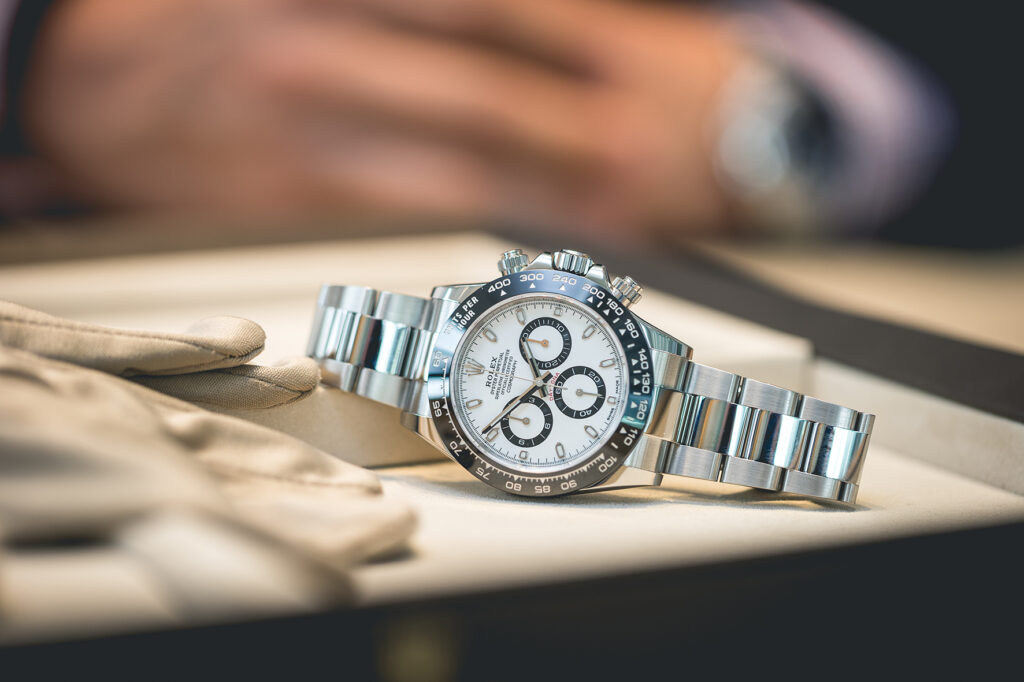When people think about investing, stocks, bonds, or real estate usually come to mind. But in recent years, a growing number of investors have turned their attention to an unlikely asset class: luxury brands. High-end watches, designer handbags, and even limited-edition sneakers are increasingly seen not just as fashion statements, but as potential stores of value. The question is—can these luxury assets actually beat traditional markets in terms of returns?
The Rise of Luxury Goods as Alternative Investments
The luxury goods market has expanded rapidly over the last decade. According to Bain & Company, the global personal luxury goods sector reached € 345 billion in 2022, driven by strong demand from younger generations and emerging markets. But beyond retail sales, a parallel trend has emerged: the resale market. Platforms like Chrono24, The RealReal, and Vestiaire Collective have transformed once-exclusive items into liquid, tradeable assets.
Designer bags and investment watches, in particular, have shown remarkable price resilience. For instance, the Hermès Birkin bag has historically appreciated by around 14% annually, according to a 2021 study by Baghunter—beating both the S&P 500 (8–10%) and gold (1–2%) over the same timeframe. Similarly, some limited-edition Rolex and Patek Philippe watches have not only held their value but sometimes doubled in price within a few years of purchase.
Why Some Luxury Assets Hold Their Value
The secret behind these gains lies in scarcity and brand prestige. Unlike mass-produced consumer goods, luxury items are often released in limited quantities. The waiting list for certain Hermès bags can stretch years, while Rolex has famously tightened supply of its most iconic models. This artificial scarcity drives up demand on the secondary market, where eager buyers are willing to pay a premium.
Cultural factors also play a role. In regions like Asia, luxury handbags and watches are seen not only as fashion but as symbols of financial stability. A 2023 Deloitte survey revealed that 47% of Gen Z luxury buyers in China consider resale value when purchasing a high-end product. This mindset turns consumption into a form of strategic investing.
The Risks of Treating Luxury as an Investment
Of course, not every designer item is a golden ticket. The luxury market is highly segmented, and only select models from select brands show consistent appreciation. For example, while a Hermès Birkin or a Rolex Submariner may appreciate, less iconic brands or seasonal collections often depreciate quickly once they leave the boutique.
Liquidity can also be a challenge. Unlike stocks that can be sold within seconds, selling a luxury bag or watch may take weeks or months, depending on demand. Additionally, authenticity is a major concern: counterfeit goods make up an estimated 3.3% of global trade, according to the OECD, which means investors must be cautious about sourcing and verification.
Finally, maintenance costs can erode returns. A vintage watch might require expensive servicing, while luxury bags must be carefully stored to prevent damage that reduces resale value.
Luxury vs. Traditional Markets: Which Is Better?
From a purely financial standpoint, luxury investments should be viewed as alternative assets rather than core portfolio holdings. They can provide diversification, since their performance is often uncorrelated with stocks and bonds, and in some cases, luxury assets even act as hedges against inflation. However, unlike traditional investments, they come with higher barriers to entry, lower liquidity, and more specialized knowledge requirements.
Think of luxury investments as a complement, not a replacement. Allocating 5–10% of a portfolio to alternative assets like luxury goods may make sense for some investors who have already built a strong base of diversified holdings.
Timeless Value or Trendy Gamble?
So, do designer bags and investment watches really beat the market? Sometimes, yes—especially when it comes to iconic, limited-supply models. The Hermès Birkin and select Rolex watches have demonstrated that luxury goods can outperform even the stock market under the right conditions. But unlike index funds or ETFs, this path is neither predictable nor easily scalable.
For investors intrigued by the glamour of luxury assets, the best approach is cautious optimism. Start small, focus on pieces with proven track records, and always verify authenticity. After all, a portfolio that combines both timeless style and sound strategy might be the most elegant investment of all.

